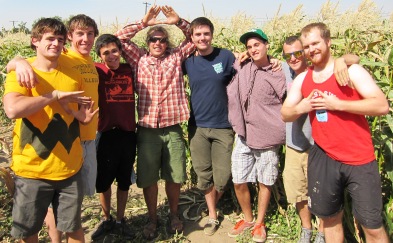The support of a strong and well-established organization such as BMAC makes it easier for your program to approach growers and let them know where and how their excess produce will be distributed. Try to make initial contact with potential donors in the off-season when they are likely less busy. Talk to anyone and everyone you can - it never hurts to approach a donor and ask. If they can’t donate, maybe they know someone who can.
Methods of Successful Outreach:
Commercial Growers
-
Face-to-face interaction at farmers market vendors’ tables or farm visits seemed to work best
-
Networking at farmers market meetings and tabling at markets and events
-
Sending out a letter explaining the program (with contact information) to farmers
-
Attending meetings or setting up meetings with agriculture-related organizations
-
Flier or inserts in Washington State University extension offices or agriculture company newsletters (e.g. Farmer’s Co-op)
Residential Growers
-
Speaking at local garden clubs, service clubs, non-profits, colleges, high schools and companies
-
Press releases
-
Tabling and passing out seeds to encourage extra donations
-
Post fliers anywhere and everywhere
-
Word of mouth
Things to Highlight to Donors
Growers who donate:
-
Receive a tax-deductible receipt for their donation
-
Feed their community healthy and local produce
-
Reduce food waste that they worked hard to produce

Appreciation
Be sure to always let your donor know that you appreciate their produce and time and allowing you to glean. Every month or at the end of the season, send a thank you note with the total amount of pounds they donated for their tax purposes to show your appreciation.
Liability
WWCH stresses to any donor that all volunteers are required to sign a Release of Liability and Waiver before attending any gleaning event. WWCH also provides them with information about the Good Samaritan Act and USDA gleaning information. Ensure the grower that training takes place before every glean and that the gleaning coordinator will always be present. Make sure volunteer training includes: farm etiquette, proper use of harvesting tools, and safety protocol.


